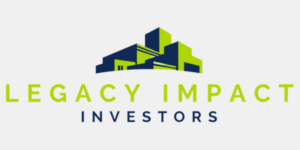“Forming a partnership compounds your effort, experience, and access to commercial real estate investments. Together, you can achieve far more than you can independently.”
– Neil J. Timmins
When undertaken with proper consideration and structure, a real estate partnership can be one of the most powerful investment tools at your disposal. Most often, investors use them for the acquisition of commercial real estate because of the large amount of capital and expertise required.
The slew of technical terms used to describe partnerships may seem intimidating: S-Corps, sponsors and syndications, limited partners and general partners, LLCs and LLPs, waterfalls and preferred return (pref).
What do these terms mean? And, more important, what do they mean for you?
Let’s start with a basic distinction.
Do you want to be an active or a passive investor?
PASSIVE: LIMITED PARTNER
Passive real estate investors participate by bringing money to a deal. They might do so as part of a syndication (money pooled from many investors for the purchase of a property) or as a Limited Partner (LP). The liability of an LP varies depending on the partnership structure and the partners’ investment; in general, they have significantly reduced liability exposure and negligible to no involvement in daily operations. They make money by getting a return on the capital they invested. LPs choose to invest this way because they may have limited time, they lack local real estate knowledge, or it is their preferred income strategy.
ACTIVE: GENERAL PARTNER
Maybe you’re in the real estate business and want to do what you do best! This is where the active investor (often called the general partner, or GP) enters the scene. As a GP, you provide value by sourcing deals and leveraging your experience, network of connections, local knowledge, and good old sweat equity. Although you can expect to invest some money, you are rewarded with disproportionate gains because you orchestrated the investment. Plenty of people have money; very few people can structure profitable real estate ventures. Valuable investment opportunities are a natural magnet for money.
Commercial real estate is commonly owned under the entity structures of a corporation (C Corp), limited liability company (LLC), limited liability partnership (LLP), or S-corporation (although not commonly).
The remainder of this article focuses on the role of the active investor element of a partnership. Although the responsibilities of the GP will vary, they are largely responsible for key project decisions and daily operations. Active participants divvy up roles and responsibilities among the members based on experience, skill, and workload.
A partnership can give you the leverage, access, or resources you need to acquire commercial real estate that would otherwise be outside of your reach. Keep in mind that it is critical to establish a partnership exclusively with other high-caliber investors.
Here are a few helpful areas to consider when forming a real estate partnership:
1. Complement
You can’t build much with two nails and no hammer. You need one of each. In a potential partner, you are not looking for someone who offers the same skills or has the same needs as you. There is an old saying that “When two men always agree, one of them is unnecessary.” A successful partnership is about finding a synergistic solution to compound your mutual benefit through the leverage of your combined strengths and connections. Together, your needs and skills complement each other to maximize your opportunity costs.
2. Core Values
Can you imagine onboarding a new employee without first ensuring they match your company’s core values and culture? With any potential partner, you must share similar core values or be willing to be held accountable to an agreed-upon standard of operation. Conduct due diligence on your potential partner’s character. Be sure that you trust them—your money, time, reputation, and future are tied up with theirs.
3. Structure
You don’t want to align yourself or your business with a partner who is an inept operator. You need a partner with clarity and structure. A lack of structure is only the first indication of existing problems. It doesn’t take a lot of imagination to connect the dots: If there is no discernible business structure, there isn’t going to be more as you dig. Lost opportunities. Lost revenue. Wasted dollars. Wasted time. Save yourself the danger and start asking questions, including these:
-
- What is your existing business structure (employees, contractors, etc.)?
-
- What are the three to five core operating systems or processes that run your business?
-
- How would the partnership integrate with your existing business? What are your business goals for this year—and the next 3-5 years?
4. Experience and Portfolio
President Ronald Reagan said: “Trust but verify.” The phrase applies to real estate as well as politics. The most successful partnerships are not established on blind trust; they are built on a foundation of proven competence because the best indicator of future success is past results. One of the best ways to access new real estate opportunities is through a partnership, but you must be discerning about who you let in the door. Any partner needs to be able to demonstrate an extensive portfolio and industry experience.
-
- Here are some questions for evaluating business experience and portfolio:
-
- What does their current portfolio consist of (i.e., single family, apartments, retail, office, warehouse, land, etc.)?
-
- In the last year, how many and what types of properties have they acquired?
-
- How do they manage borrowing needs to maintain appropriate leverage in the portfolio?
-
- Do they have any existing history of liens or judgments against them or any of their assets?
-
- What assets are they looking to acquire in the next 2-3 years?
5. Expectation Management
Safeguard against preventable interpersonal pitfalls by setting clear expectations for your working relationship before problems arise. Expectation management ensures that each party can independently take ownership of their responsibilities. There should be no ambiguities about who is responsible for what. When the rules of the partnership are clearly defined, it minimizes the risk of future drama or interpersonal issues interfering with the long-term success of your partnership.
Here are a few questions to get the conversation going on expectation management:
-
- Who is responsible for due diligence for title, lending, attorneys, private investors, appraisers, etc.?
-
- Who is responsible for ongoing property management after closing?
-
- How are decisions made and who needs to be involved in the decision-making process?
-
- What kind of ownership entity should be established for the acquisition? What will the governing operating agreement entail? How, when, and who is responsible for profit distribution?
-
- What are the expectations for communication methods and standards (i.e., e-mail, scheduled calls, texts)?
The five areas discussed here do not form an exhaustive list of what should be considered in a partnership; however, when paired with counsel from your accountant, financial advisor, attorney, or other investment professionals, you will be well on your way to evaluating a potential real estate partnership.
Forming a partnership compounds your effort, experience, and access to commercial real estate investments. Together, you can achieve far more than you can independently. For those who invest passively, you must understand the experience, structure, and business plan of the GP with whom you invest your money. When undertaken with careful consideration, a real estate partnership can be mutually beneficial for both active and passive investors.

